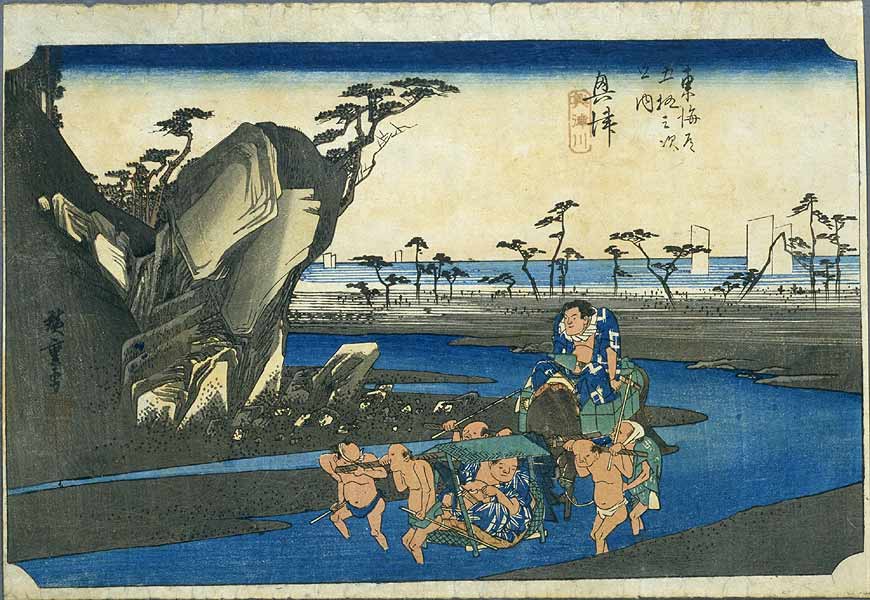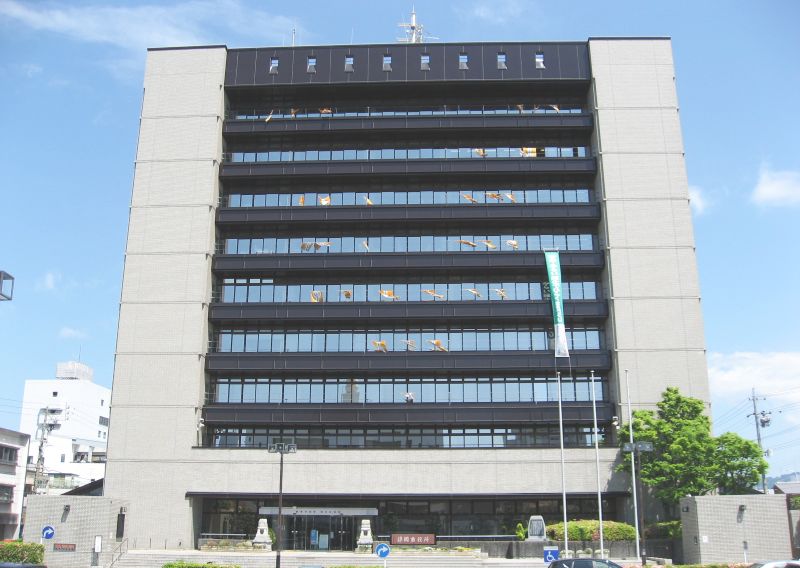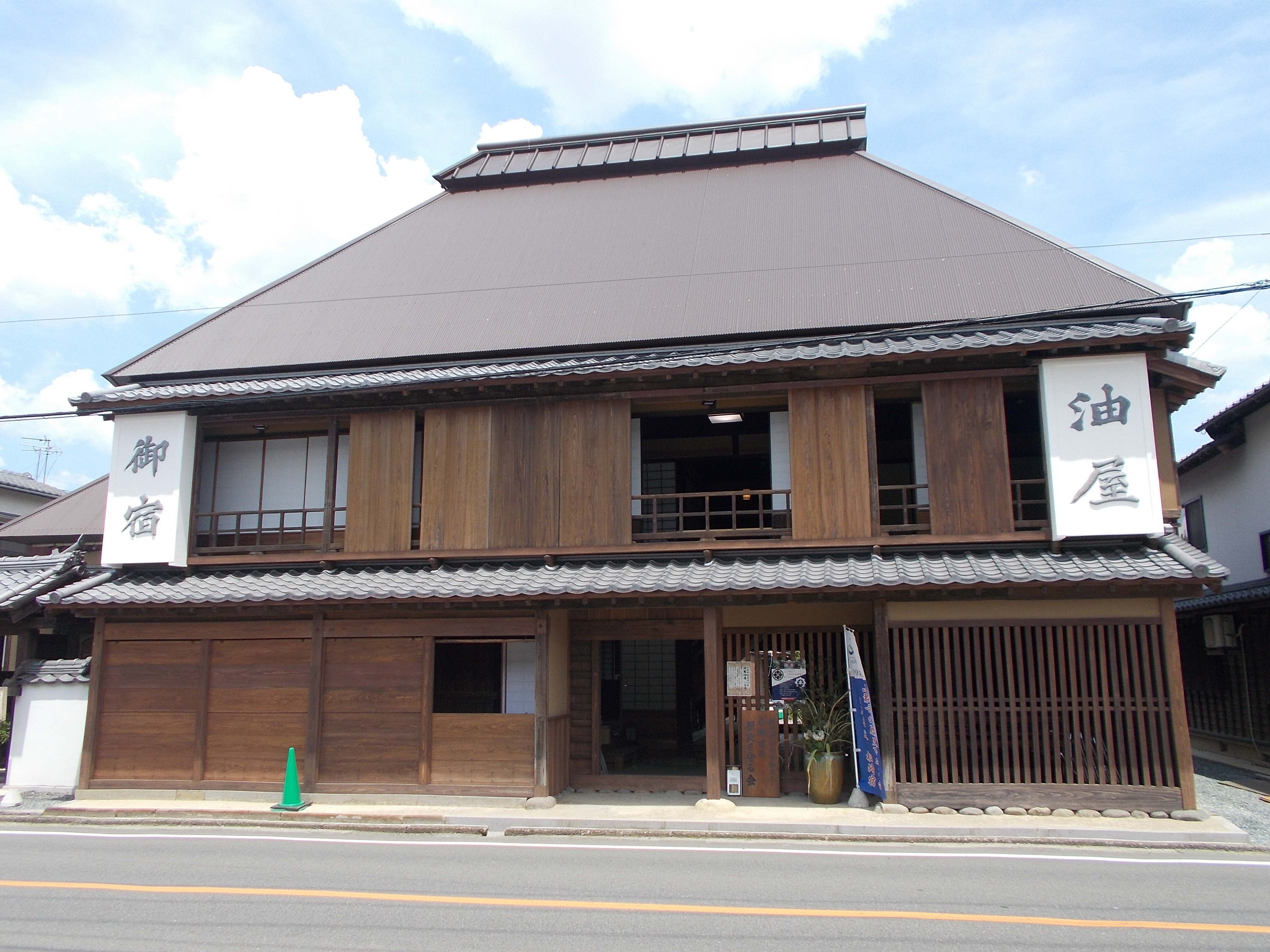|
Okitsu-juku
was the seventeenth of the fifty-three stations of the Tōkaidō. It is located in what is now part of the Shimizu-ku area of Shizuoka, Shizuoka Prefecture, Japan. History Okitsu-juku was established in 1601, just before the beginning of the Edo period. At its peak, there were approximately 316 buildings and 1,668 people. Among the buildings were two ''honjin'', two sub-''honjin'' and 34 ''hatago''. It was a little over 11 kilometers from the preceding post station, Yui-shuku. The classic ukiyo-e print by Andō Hiroshige (''Hōeidō'' edition) from 1831–1834 depicts two sumo wrestlers being carried across the Okitsu River, one on a packhorse and the other in a ''kago''. Neighboring post towns ;Tōkaidō :Yui-shuku - Okitsu-juku - Ejiri-juku was the eighteenth of the fifty-three stations of the Tōkaidō. It is one of four former post stations located in what is now part of the Shimizu-ku area of Shizuoka, Shizuoka Prefecture, Japan. It was 3.4 kilometers from Ok ... [...More Info...] [...Related Items...] OR: [Wikipedia] [Google] [Baidu] |
Ejiri-juku
was the eighteenth of the fifty-three stations of the Tōkaidō. It is one of four former post stations located in what is now part of the Shimizu-ku area of Shizuoka, Shizuoka Prefecture, Japan. It was 3.4 kilometers from Okitsu-juku, the preceding post station. History Ejiri-juku was Ejiri Castle's castle town. The castle was built in 1570, but Ejiri-juku was not officially designated a post station until the early 17th century. At its peak, it had two ''honjin'', three sub-''honjin'' and 50 ''hatago'', among the 1,340 total buildings. Its population was around 6,500.53 Stations of the Tōkaidō - Ejiri-juku . Kōhei Wada. Accessed November 9, 2007. Ejiri-juku gave its name to the area's railway station, until it was renamed [...More Info...] [...Related Items...] OR: [Wikipedia] [Google] [Baidu] |
53 Stations Of The Tōkaidō
The are the rest areas along the Tōkaidō, which was a coastal route that ran from Nihonbashi in Edo (modern-day Tokyo) to Sanjō Ōhashi in Kyoto.. There were originally 53 government post stations along the Tōkaidō, where travelers had to present traveling permits at each station if wanting to cross. In 1619, the Ōsaka Kaidō (大阪街道) was developed to extend the Tōkaidō so that it would reach Kōraibashi in modern-day Osaka. Instead of going to Sanjō Ōhashi, travelers would leave from Ōtsu-juku and travel towards Fushimi-juku. Because of the addition of these four post towns, the Tōkaidō is occasionally referred to as having 57 stations. Another name for this extension was Kyōkaidō (京街道). The inland Nakasendō also started at Nihonbashi, and converged with the Tōkaidō at Kusatsu-juku. Shio no Michi intersected with the Tōkaidō at Okazaki-shuku. Stations of the Tōkaidō See also * Edo Five Routes ** 69 Stations of the Nakase ... [...More Info...] [...Related Items...] OR: [Wikipedia] [Google] [Baidu] |
Shimizu-ku, Shizuoka
is the easternmost of the three wards of the city of Shizuoka in Shizuoka Prefecture, Japan. History Shimizu-ku was created on April 1, 2005, when Shizuoka became a city designated by government ordinance (a "designated city"). Its area is almost identical to former Shimizu city, which merged with Shizuoka city on April 1, 2003. Shizuoka annexed the town of Kanbara from Ihara District on March 31, 2006, and the town of Yui on November 1, 2008, adding these former municipalities to Shimizu-ku. Since ancient times, Shimizu thrived as a harbor town due to its good natural harbor. In addition, five post stations of Tōkaidō were located in Shimizu: (Kanbara-juku, Okitsu-juku, Ejiri-juku, and Yui-shuku, all of which brought prosperity to the area during the Edo period. After the Meiji Restoration, an Imperial decree in July 1899 established Shimizu as an open port for trading with the United States and the United Kingdom.US Department of State. (1906) ''A digest of international ... [...More Info...] [...Related Items...] OR: [Wikipedia] [Google] [Baidu] |
Yui-shuku
was the sixteenth of the fifty-three stations of the Tōkaidō. It is located in the Shimizu-ku area of Shizuoka, Shizuoka Prefecture, Japan. It is one of four former post stations located in Shimizu-ku. Area information At the ''Tōkaidō Yui-shuku Omoshiro Shukubakan'', visitors can experience various aspects of life in the Edo period ''shukuba'', ranging from schooling and lodging, to working and socializing. The area is known for its ''sakura ebi'', a type of small shrimp.Yui . JAPANiCAN. Accessed October 26, 2007. In the classic print by (Hōeidō edition) ... [...More Info...] [...Related Items...] OR: [Wikipedia] [Google] [Baidu] |
Kago
A is a type of litter used as a means of human transportation by the non-samurai class in feudal Japan and into the Meiji period The is an era of Japanese history that extended from October 23, 1868 to July 30, 1912. The Meiji era was the first half of the Empire of Japan, when the Japanese people moved from being an isolated feudal society at risk of colonization ... (1868–1911). Description and use The basket of a was roughly long, and attached to bamboo uprights which were suspended by a large overhead single crossbeam. A roof of some type covered the top and screens could be used to cover the sides as protection from sun or rain. A would carried by a team of four men, who would take turns carrying the on their shoulders; five or six miles could be traveled in one hour. One man would support the weight of the large overhead pole at each end and walked until he tired and switched with a rested carrier. The should not be confused with the more elaborate , wh ... [...More Info...] [...Related Items...] OR: [Wikipedia] [Google] [Baidu] |
Sumo
is a form of competitive full-contact wrestling where a ''rikishi'' (wrestler) attempts to force his opponent out of a circular ring (''dohyō'') or into touching the ground with any body part other than the soles of his feet (usually by throwing, shoving or pushing him down). Sumo originated in Japan, the only country where it is practiced professionally and where it is considered the national sport. It is considered a ''gendai budō'', which refers to modern Japanese martial arts, but the sport has a history spanning many centuries. Many ancient traditions have been preserved in sumo, and even today the sport includes many ritual elements, such as the use of salt purification, from Shinto. Life as a wrestler is highly regimented, with rules regulated by the Japan Sumo Association. Most sumo wrestlers are required to live in communal sumo training stables, known in Japanese as ''heya'', where all aspects of their daily lives—from meals to their manner of dress—are dic ... [...More Info...] [...Related Items...] OR: [Wikipedia] [Google] [Baidu] |
Andō Hiroshige
Utagawa Hiroshige (, also ; ja, 歌川 広重 ), born Andō Tokutarō (; 1797 – 12 October 1858), was a Japanese ''ukiyo-e'' artist, considered the last great master of that tradition. Hiroshige is best known for his horizontal-format landscape series ''The Fifty-three Stations of the Tōkaidō'' and for his vertical-format landscape series ''One Hundred Famous Views of Edo''. The subjects of his work were atypical of the ''ukiyo-e'' genre, whose typical focus was on beautiful women, popular actors, and other scenes of the urban pleasure districts of Japan's Edo period (1603–1868). The popular series '' Thirty-six Views of Mount Fuji'' by Hokusai was a strong influence on Hiroshige's choice of subject, though Hiroshige's approach was more poetic and ambient than Hokusai's bolder, more formal prints. Subtle use of color was essential in Hiroshige's prints, often printed with multiple impressions in the same area and with extensive use of '' bokashi'' (color gradation), ... [...More Info...] [...Related Items...] OR: [Wikipedia] [Google] [Baidu] |
Ukiyo-e
Ukiyo-e is a genre of Japanese art which flourished from the 17th through 19th centuries. Its artists produced woodblock prints and paintings Painting is the practice of applying paint, pigment, color or other medium to a solid surface (called the "matrix" or "support"). The medium is commonly applied to the base with a brush, but other implements, such as knives, sponges, and ai ... of such subjects as female beauties; kabuki actors and sumo wrestlers; scenes from history and folk tales; travel scenes and landscapes; Flora of Japan, flora and Wildlife of Japan#Fauna, fauna; and Shunga, erotica. The term translates as "picture[s] of the floating world". In 1603, the city of Edo (Tokyo) became the seat of the ruling Tokugawa shogunate. The ''chōnin'' class (merchants, craftsmen and workers), positioned at the bottom of Four occupations, the social order, benefited the most from the city's rapid economic growth, and began to indulge in and patronise the entertainment o ... [...More Info...] [...Related Items...] OR: [Wikipedia] [Google] [Baidu] |
Hatago
were Edo period lodgings for travelers at '' shukuba'' (post stations) along the national highways, including the Edo Five Routes The , sometimes translated as "Five Highways", were the five centrally administered routes, or ''kaidō'', that connected the ''de facto'' capital of Japan at Edo (now Tokyo) with the outer provinces during the Edo period (1603–1868). The most ... and the subroutes. In addition to a place to rest, ''hatago'' also offered meals and other foods to the travelers. They were also called . Name origin ''Hatago'' means "traveling basket." The word itself originally derived from baskets that contained food for horses and were carried by travelers. From there, it became a tool with which travelers were carry their own food and goods. Shops that began preparing and selling food for travelers gained the suffix , meaning "shop," but this was eventually shortened to just ''hatago''. Preserved ''hatago'' Because many post stations along the Tōkaidō, Nakas ... [...More Info...] [...Related Items...] OR: [Wikipedia] [Google] [Baidu] |
Shukuba
were post stations during the Edo period in Japan, generally located on one of the Edo Five Routes or one of its sub-routes. They were also called ''shuku-eki'' (宿駅). These post stations (or "post towns") were places where travelers could rest on their journey around the nation. They were created based on policies for the transportation of goods by horseback that were developed during the Nara and Heian periods. History These post stations were first established by Tokugawa Ieyasu shortly after the end of the Battle of Sekigahara. The first post stations were developed along the Tōkaidō (followed by stations on the Nakasendō and other routes). In 1601, the first of the Tōkaidō's fifty-three stations were developed, stretching from Shinagawa-juku in Edo to Ōtsu-juku in Ōmi Province. Not all the post stations were built at the same time, however, as the last one was built in 1624. The lodgings in the post stations were established for use by public officials and, ... [...More Info...] [...Related Items...] OR: [Wikipedia] [Google] [Baidu] |
Honjin
The ''honjin'' at Inaba Kaidō's Ōhara-shuku.">Ōhara-shuku.html" ;"title="Inaba Kaidō's Ōhara-shuku">Inaba Kaidō's Ōhara-shuku. is the Japanese word for an inn for government officials, generally located in post stations (''shukuba'') during the later part of the Edo period. Evolution of ''Honjin'' Originally, ''honjin'' were places from which generals directed battles and, therefore, were fleeting in nature. However, as commanders began to transform the ''honjin'' into temporary lodgings during battle and travel, ''honjin'' came to be places where ''daimyō'' and other representatives of the shogunate, including ''hatamoto'', ''monzeki'', etc., were allowed to stay during their travels. Many of the ''honjin'' were actually personal residences of village and town leaders. As such, they received official designations from the government and expanded their residences to include walls, gates and other features. Because of their cooperation, the owners of the ''honjin'' also ... [...More Info...] [...Related Items...] OR: [Wikipedia] [Google] [Baidu] |






_Awa_Naruto_no_fuukei.jpg)


